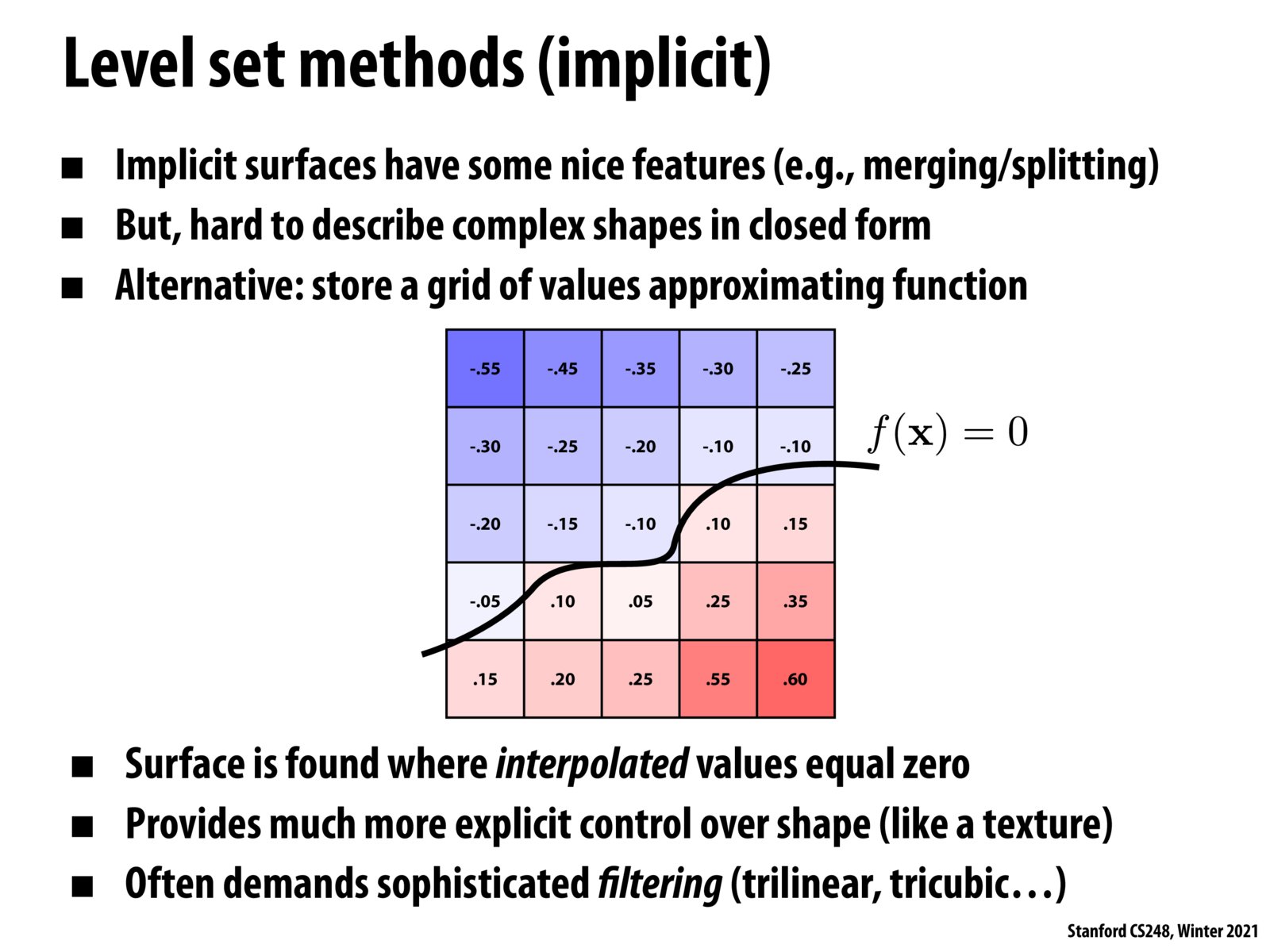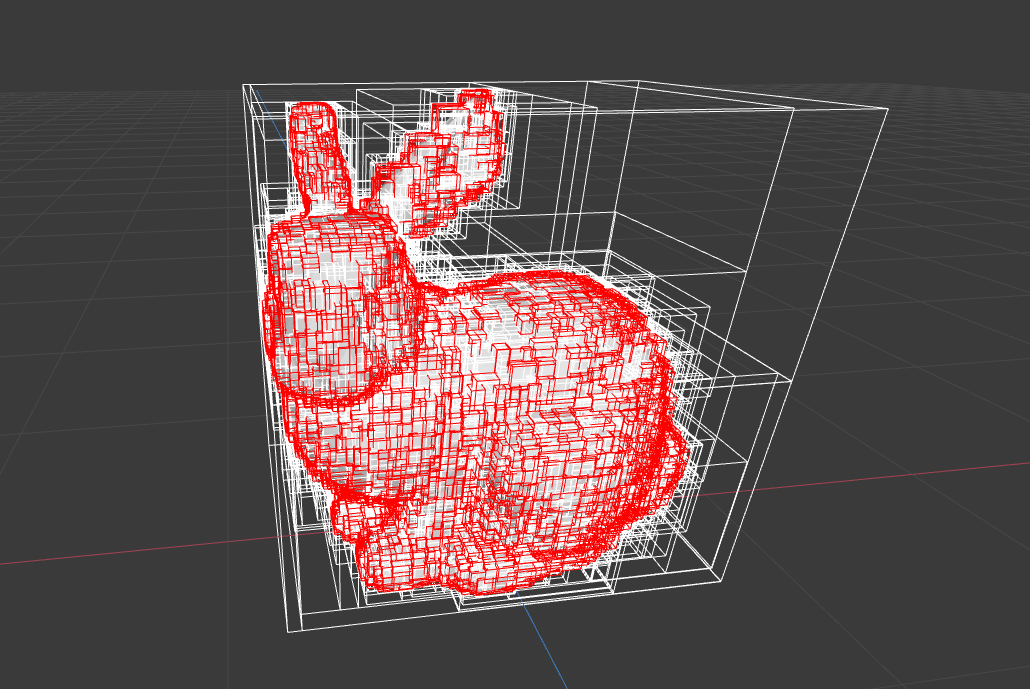


Does the trilinear filtering of level set works in the similar ways to the texture mapping (e.g. the further away from camera, the greater the mip level)?

I have the same question as @goku2021.

What's the difference in storage space between storing this grid and storing a spaced out point cloud near the surface and interpolating between those points? Is the latter not doable?

What's the needed computation power for this method? It seems like pre-calculating the approximation function and doing filtering would be computationally expensive. Or would the approximation function/level set be given, like we were given texture maps?

@liangcyn I think the two methods are quite similar but storing a point cloud should be more memory efficient. After all, a point cloud is a collection of points, but a level set is a grid of numbers that tell us more about the curve and at the same time require more storage.
Please log in to leave a comment.
One question: does level set require evaluation of f(x) on a grid of points, as shown in the example? If not, does it require prior knowledge of the function shape?